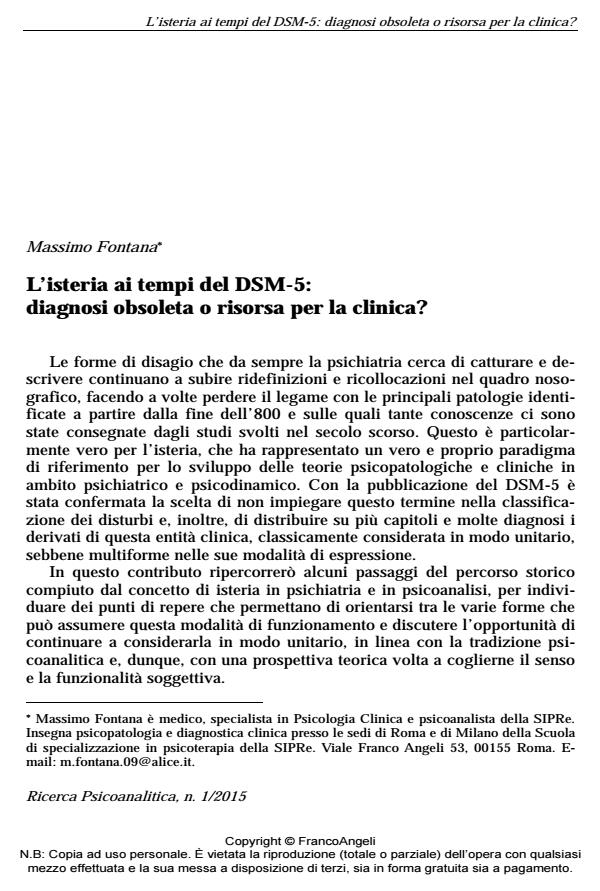Hysteria in the times of dsm-v: obsolete diagnosis or resource for clinical work?
Journal title RICERCA PSICOANALITICA
Author/s Massimo Fontana
Publishing Year 2015 Issue 2015/1
Language Italian Pages 16 P. 85-100 File size 69 KB
DOI 10.3280/RPR2015-001007
DOI is like a bar code for intellectual property: to have more infomation
click here
Below, you can see the article first page
If you want to buy this article in PDF format, you can do it, following the instructions to buy download credits

FrancoAngeli is member of Publishers International Linking Association, Inc (PILA), a not-for-profit association which run the CrossRef service enabling links to and from online scholarly content.
The author examines the history of the diagnosis of hysteria in psychoanalysis and psychiatry focusing in particular on its vicissitudes in the Diagnostic and Statistical Manual of Mental Disorders from the second edition of 1968 to the fifth of 2013. In the two latest editions the term hysteria has been dropped and with it also the concept encompassing this pathology that instead is present in the psychiatric and psychoanalytic tradition starting from the first modern theories formulated in the late 1800s (Briquet, Babinski, Bernheim, Charcot, Janet and Freud). Its current nosological derivatives can be found in the DSM in various categories such as Conversion disorder, Pseudokinesis, Dissociative disorders in addition to the Histrionic Personality Disorder. With the help of psychoanalytical literature, the Author identifies the common denominator of hysterical functioning in the tendency to communicate distress through indirect channels (body, states of consciousness, emotions). This would justify the preservation of this diagnosis as a single category.
Keywords: Hysteria, DSM-V, somatisation, conversion, dissociation, represssion
Massimo Fontana, L’isteria ai tempi del DSM-5: diagnosi obsoleta o risorsa per la clinica? in "RICERCA PSICOANALITICA" 1/2015, pp 85-100, DOI: 10.3280/RPR2015-001007